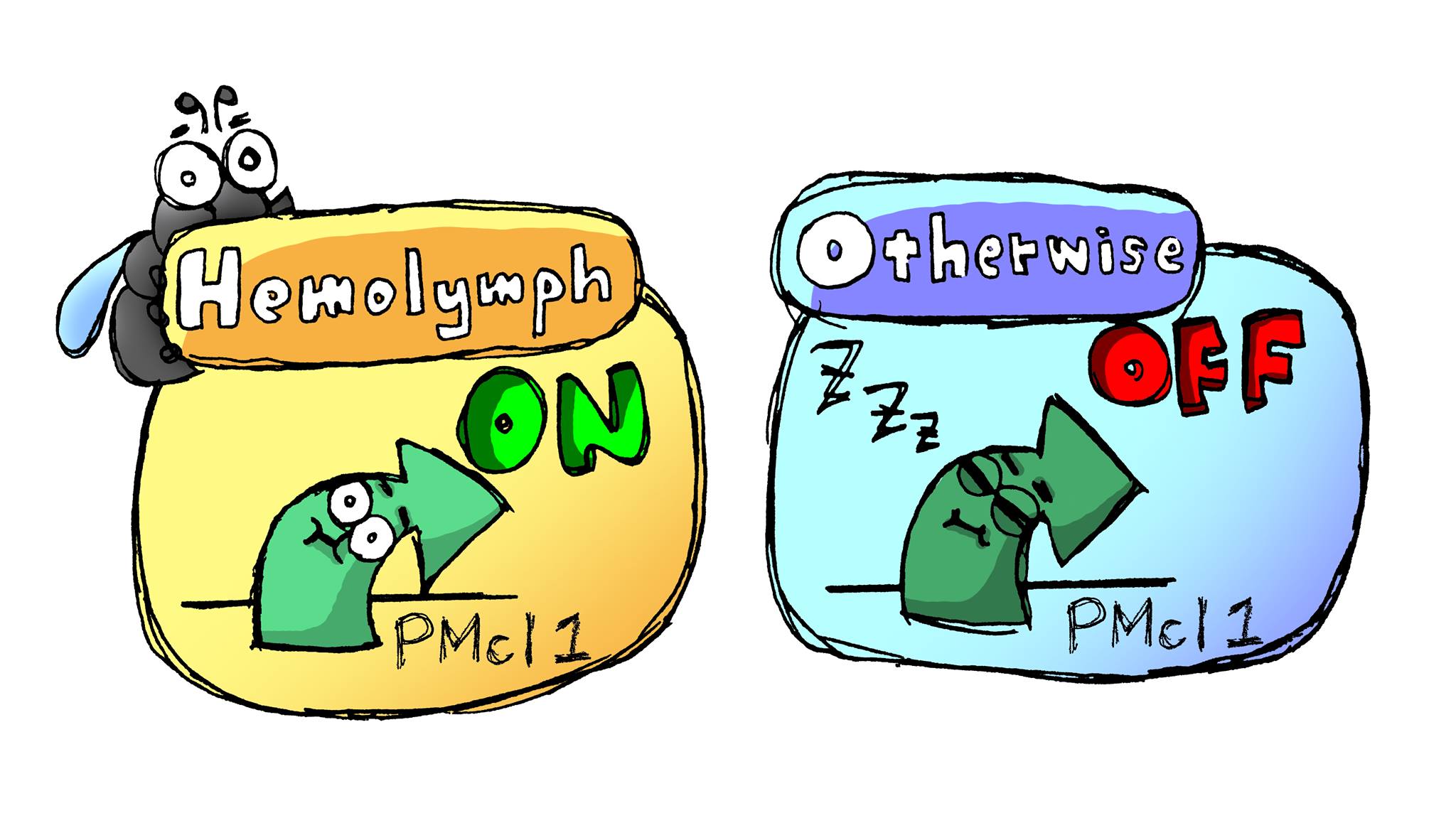Part:BBa_K2040100
PMcl1, hemolymph inducible promoter from Metarhizium anisopliae
The expression of Metarhizium collagen-like protein MCL1 is only induced by insect hemolymph, and in insect hemolymph it is expressed at a high level. Utilizing the promoter of Mcl1 (PMcl1) in genetically engineering Metarhizium allows the expression of target genes to be limited to the hemocoel of the fungus' host insects, ensuring the specificity of gene expression[1].
Usage and Biology
The entomopathogenic fungus Metarhizium anisopliae is widely used for biocontrol of pest insects. Genetic engineering is a useful tool to improve the virulence of entomopathogenic fungi and their tolerance to adverse conditions.The Mcl1 promoter is to date the only development-stage-specific promoter used in the genetic engineering of entomopathogenic fungi. Scientists used the insect-hemolymph-inducible promoter PMcl1 to limit the expression of insect-selective toxins to the heomocoel of the target insects, so that efficacy and safety of the genetic modified entomopathogenic fungi were increased[2][3].
NYMU 2016 designed a a light inducible killswitch circuit with PMcl1, for genetic engineered entomopathogenic fungi whose virulence and tolerance were enhanced. We hoped that this killswitch can greatly mitigate the safety concerns of the GM fungi so that those enhanced fungi have greater possibility to be implemented in field.
[http://2016.igem.org/Team:NYMU-Taipei/Design Click into NYMU 2016-Project design]
Improvement by 2023 Hangzhou-SDG
2023 Hangzhou-SDG Team has improved this part. A short version of this part (1586bp) has been proven can lead to a higher expression of the downstream genes. The improved promoter is called Pmcl1(short) (BBa_K4882000).
KillerRed (BBa_K1184000) and SuperNova (BBa_K4882008) are red fluorescent proteins that produce reactive oxygen species (ROS) in the presence of light. They can be a part of the suicide switch for M. anisopliae when being connected after the hemolymph inducible promoter Pmcl1/Pmcl1(short).
Larvae of Galleria mellonella were killed by engineered M. anisopliae. The corpses were placed under sunshine for days until spores formed outside the insect body. Spores were collected by vertexing and the concentrations of spore suspensions were checked under a microscope. Fewer spores meant more cells committed suicide.

Results showed that suicide switches consisting of Pmcl1(short) led to significantly fewer spores than Pmcl1(full-length) (p < 0.01). This was due to the higher expression of the downstream genes. This proved that Pmcl1 (short) is an improved version of Pmcl1 (BBa_K2040100).
References
[1] Wang, C., & St. Leger, R. J. (2006). A collagenous protective coat enables Metarhizium anisopliae to evade insect immune responses. Proceedings of the National Academy of Sciences of the United States of America, 103, 6647-6652.
[2]Wang, C., & St. Leger, R. J. (2007a). A scorpion neurotoxin increases the potency of a fungal insecticide. Nature Biotechnology, 25, 1455e1456.
[3]Peng, G., & Xia, Y. (2015). Integration of an insecticidal scorpion toxin (BjaIT) gene into Metarhizium acridum enhances fungal virulence towards Locusta migratoria manilensis. Pest Management Science, 71, 58e64.
Sequence and Features
- 10COMPATIBLE WITH RFC[10]
- 12INCOMPATIBLE WITH RFC[12]Illegal NheI site found at 1673
- 21INCOMPATIBLE WITH RFC[21]Illegal XhoI site found at 853
- 23COMPATIBLE WITH RFC[23]
- 25INCOMPATIBLE WITH RFC[25]Illegal AgeI site found at 1229
- 1000INCOMPATIBLE WITH RFC[1000]Illegal BsaI.rc site found at 1179
Illegal SapI site found at 1130
| None |

